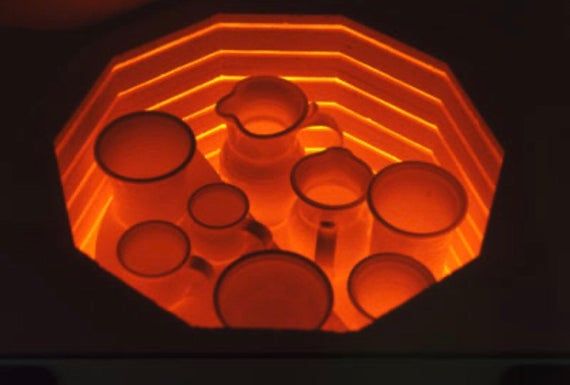A Potter's Tour of Glaze Chemistry
Pottery involves process and transformation, with lots of opportunity for magic to happen or for things to go wrong. The biggest changes to a pot happen in the kiln, where high heat changes dry clay covered with powdered glaze to ceramic encased in a thin layer of glass. A pot's change from unfired to fired is dramatic and often unpredictable.

A lot of the changes to a pot are chemical. In particular what happens when the raw glaze melts is largely driven by what kinds of atoms are part of the glaze. For example if there's too much silica the glaze might not melt, or if there's too much soda the glaze might craze. A basic chemical understanding goes a long ways towards fixing common glaze problems like under firing, crazing, substituting a material or fixing the glaze fit.
Fortunately complicated chemistry isn't needed; to a first approximation there aren't any chemical reactions to worry about. The kind of chemistry analysis that Mixup provides is fairly simple but is nevertheless useful for getting a basic handle on what's going on. In a nutshell, for a given glaze, Mixup goes through the ingredients, tallies up what kind oxides are present, and gives you the summary oxide analysis.
The main thing to learn is what role each oxide plays. Some oxides like silica and alumina are always present and are familiar parts of any glaze. There's always some flux oxides, but which fluxes and how much flux varies between glazes. Other oxides are optional and give a glaze its color and character.
It is also important to keep in mind that glaze chemistry is a very approximate tool. It can show you which direction to change a glaze, or a starting point to substitute a material, but it has limited accuracy. One of the main limitations is the published analyses of the materials. A published analysis is often only accurate to a percent or so, and materials often change over time. This is why Mixup only shows you a couple of digits of a given number - displaying any more is not really faithful to the real world.
Glaze chemistry is an established field, with many books written and college courses developed. Some online resources include:
where you will find more complete information.
